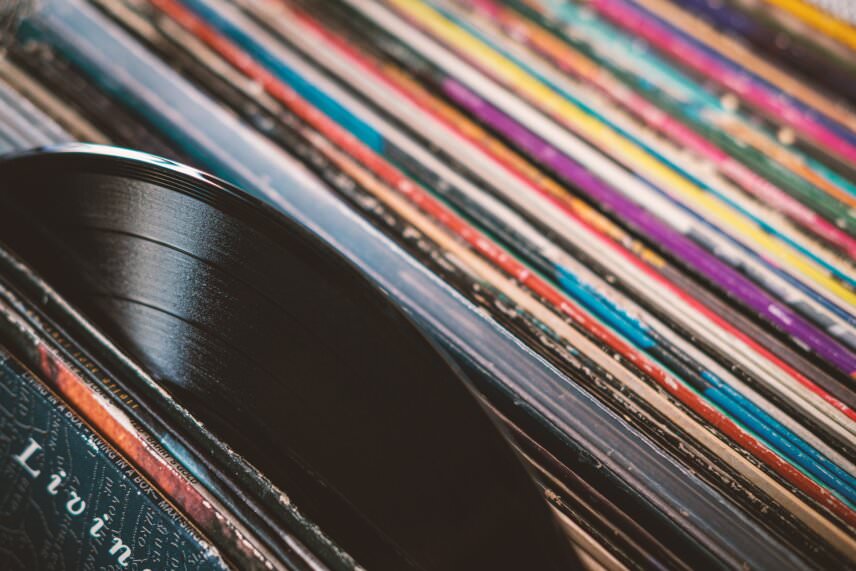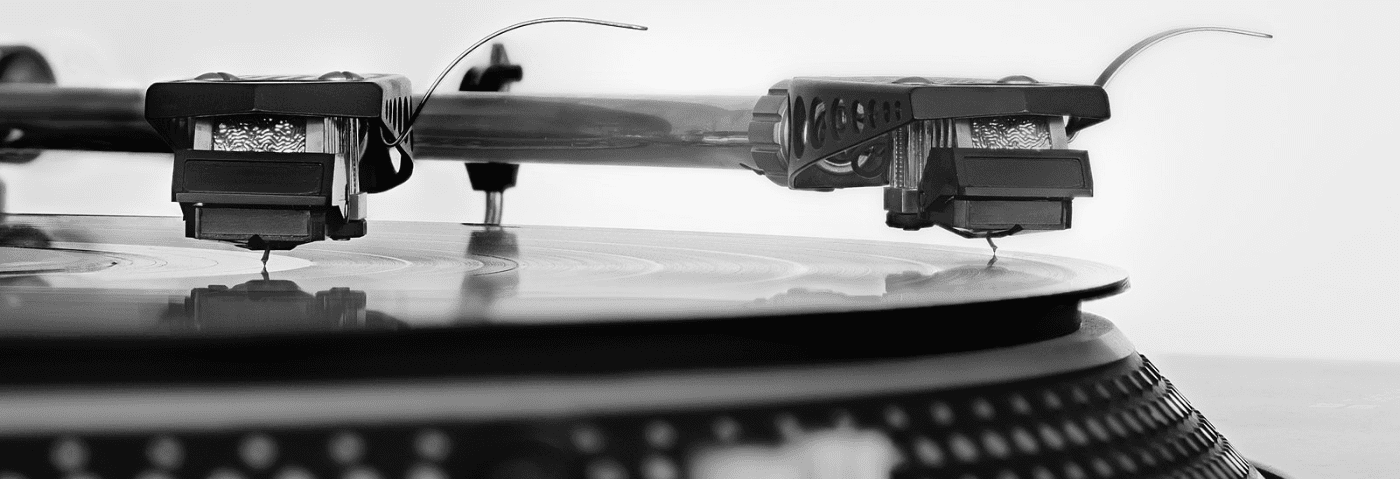We look at the best methods to care for your vinyl and how best to convert vinyl records to digital files.
Since digital technology made its way into DJs’ lives, many DJs have had to add another skill to their seemingly ever-expanding role, that of digitising records. Some DJs want to convert their old record collections to digital so they can take decades of classics out with them to gigs, in quantities that they’d never be able to carry in record boxes. Others buy their music on vinyl but then burn it instantly and only play their digital version, keeping their vinyl in pristine condition. A record might have only been pressed in very small quantities so preserving the music through a digital recording can be a very shrewd move.
Whatever the motivation, the process of getting the cleanest possible digital version of your treasured vinyl can be painstaking but one worth taking the time with as it can contribute substantially to the value of your new vinyl by allowing you to maintain it in near-mint condition. Burning old records that might not be available to the general public or that came out in limited runs also then allows you to manipulate your treasured old tunes in Rekordbox or Ableton and include them in your DJ sets.
There are lots of products available for every part of the process including vinyl care and cleaning, as well as interfaces, soundcards, dedicated record decks, software etc. so initially it may seem as though there almost too many options. Ideally, by the end of this article you should have an idea of the best and most effective way to care for you vinyl, how to prepare it for digitising and how to get the highest quality digital recording.
In order to work out a ‘best practice’ for the process of digitising vinyl, we enlisted the help of Japhy, vinyl expert, record dealer and DJ. He’s been a seller of all forms of electronic music on vinyl for over twenty years and currently runs his online record shop www.japhy.co.uk.
Attack Magazine: So first off, please can you tell us what you should do in terms of cleaning before you record your vinyl.
Japhy: Handling in the first place is important, dirty hands and greasy marks are something to avoid. Depending on what kind of dirt is on the record, a gentle wipe round anti-clockwise with a clean e-cloth (readily available at supermarkets) might be enough. If record is particularly dirty, it may be best to gently wash with distilled water / isopropyl mix, being very careful not to wet the labels. Especially dirty records may require a little more specialist cleaning.
From my experience it’s all about using quality hardware to get the best results
So if we’re getting into specialist cleaning what kind of tools or materials would you recommend?
– Highly recommended and most straight forward method is a clean e-cloth + a fine spray bottle with cleaning solution. Many use the Near Mint brand, but you can create your own versions of these if you wish. A basic version would be isopropyl and distilled water mix (10 parts distilled water, 1 part isopropyl alcohol).
– Vinyl Brush – Always good to have one handy at the side of your turntable to prevent dust build up. A method that’s been around since the beginning.
– Quality nylon paintbrush (must be nylon). Cut down to 1 inch or less for stiff bristles. Ensure record has been pre-washed first so any larger particles in the grooves don’t remain – this can damage the record, so use with caution. Apply cleaning fluid to vinyl surface, gently use brush counter clockwise in direction of the grooves to remove stuck in particles. Wipe away excess liquid. Some collectors may frown at this more hardy method.
– Ultrasonic Cleaner – These can be very expensive, but prove to be one of the most gentle, effective and popular methods for the audiophiles. I currently use a US model called a V8 which cleans 8 at a time and resembles a deep fat fryer.
– Vacuum Cleaner – There are various types on the market, Moth and Okki Nokki are good brands, but they can get expensive. There are cheap alternatives out there though, including a simple hoover attachment for wet / dry hoovers, check Vinyl Vac for an example. Vacuum cleaners are particularly good if you feel the need to avoid the use of alcohol based cleaners.
– Vinyl Bath – Effective method, the popular Knosti + Spin Clean brands are fine and affordable. They’re not motorised so are eco-friendly, and use 2 soft pads with a vinyl wash solution and distilled water to rotate through by hand. You then air dry the records afterwards. I use these regularly.
– Vinyl Putty – In my experience this is more of a gimmick than an effective method. It’s basically slightly sticky slime to roll over surface removing dirt from grooves.
– Glue – Can be very effective but comes with a warning – this can seriously ruin your records for good. Wood glue, patience, YouTube and plenty of practice on throw-away records required!
You mention cleaning vinyl counter-clockwise, is this important?
When rotating clockwise the needle will push aside or pick up small particles. Brush cleaning counter-clockwise could help to remove particles that aren’t moved during playback, just as a gentle reverse of the turntable with stylus in the groove may remove some light unwanted noise around sparse sections of music.
And do you have any general tips for looking after vinyl?
I would say the obvious first tips are having clean hands and handling the vinyl by its edges. Storing the records upright, avoiding leaning in shelves or stacking flat on top of each other as warping or mis-shaping can occur otherwise. Plastic PVC sleeves help to protect those picture covers, though in the long term records generally need a little breathing space. I’ve come across record collections in plastic sleeves that have succumbed to mould over time. Storage in an aired room out of direct sunlight is always recommended.

Talk us through how how to best record vinyl onto digital.
Once records are clean make sure the turntable is fitted with a good quality stylus that has any fluff removed. A sound card is an essential between turntable / mixer and computer. Free recording software such as Audacity work well, Soundforge was a mainstay for me during the late 90’s and early noughties. VinylStudio is a cheap but highly functional piece of software made specifically for ripping vinyl to digital. Ableton is also popular for recording too.
Always check the recording levels before you begin as peaks at recording stage are harder to rectify afterwards. Green / touching into yellow at maximum on the monitor level on your software is advised. Never go into the reds. You should check over EQs if recording through a mixer – records are cut at all kinds of levels + EQ’s, so gentle tweaks can improve the recording. Ensure the software used has any defaults like click filters or noise reduction removed before recording (some have these as a default setting you may need to dive into the menus). A clean, untampered recording is what we’re looking for.
Once recorded, cutting off any excess intros and outros and using the ‘normalise’ function can boost levels to their comfortable maximums. I would always recommend saving / exporting as a lossless file such as FLAC / WAV if storage space isn’t an issue. Compressed files such as MP3 (320k) can sound great, but if there’s no need to loose quality through compression, then don’t.
What equipment do you need to do the job well?
From my experience it’s all about using quality hardware to get the best results. You need a solid turntable with good phono outputs, good quality leads and earthing, with no background hums or buzzes. You need to have a good stylus fitted and analogue-to-digital converter or soundcard (I use an older and pretty simple Maya 44 USB which does the job nicely). There are all-in-one units out there too including phono stage, analogue-to-digital converter and USB output in one tidy unit – check Nowsonic, Focusrite and Rega).
My experience of off-the-shelf USB direct-to-computer turntables is limited, though most of these units appear to be cheap, so may lack quality. I did come across a higher end model, the Sony PS-HX500 which looked to do the job, vinyl to hi-res WAV in a simple set up for under £300 and it has great reviews.
And is there anything else we should consider?
Cleaning records and recording in real-time all takes time. Think about why you’re doing it in the first place. Many tracks on vinyl are now available as high-quality downloads and some streaming services are offering a surprisingly high-quality audio on their platforms (see Qobuz, Deezer).
Summary
So with a little assistance from Japhy, that’s our guide to cleaning and ripping vinyl. Whatever particular method you choose and whatever equipment you decide to use there are a few simple principles that you can follow to ensure you get the very best results.
- Consider why you’re digitising a piece of music – it’s time consuming, has a financial cost and the music may already be available in a high quality digital file.
- Pay very close attention to how you handle vinyl when cleaning it.
- Use the appropriate cleaning materials.
- Ensure you use the highest possible quality hardware, from the stylus and record deck to the soundcard and cables when digitising.
You can buy and sell vinyl through Japhy’s online shop.

05.58 AM
From the insightful commentary to the captivating writing, every word of this post is top-notch. Kudos to the author for producing such fantastic content.